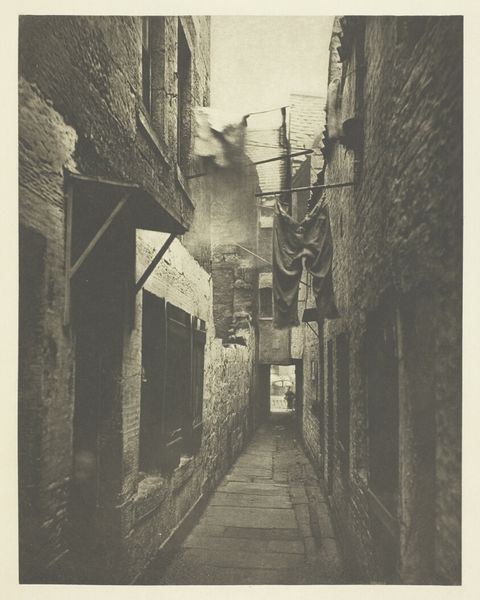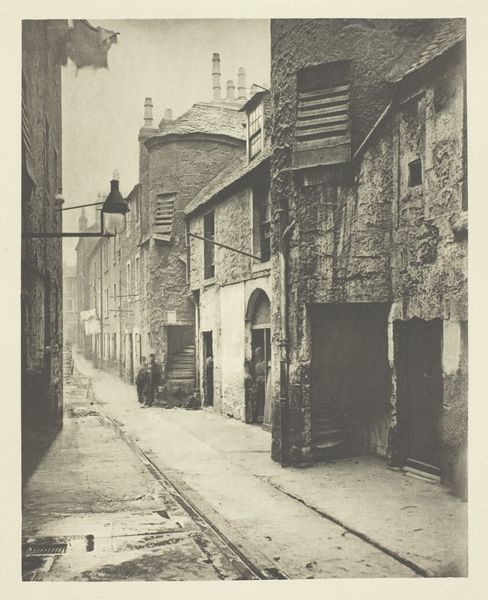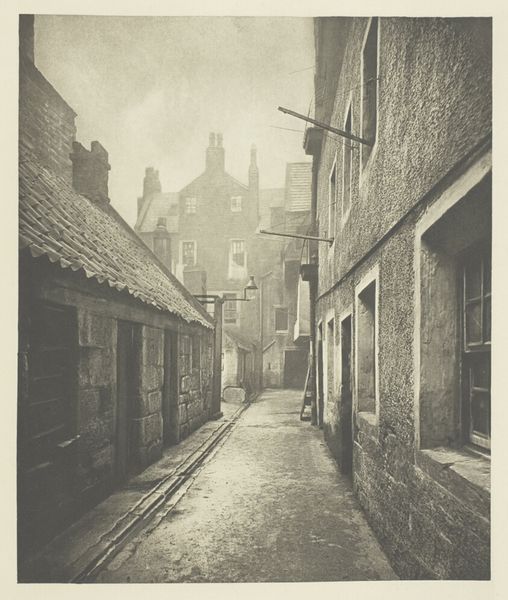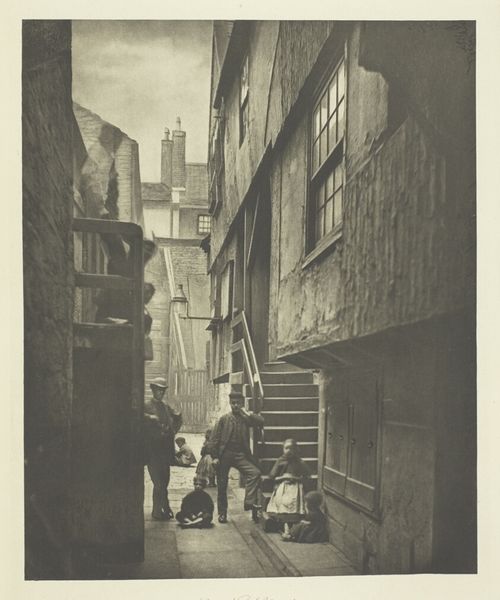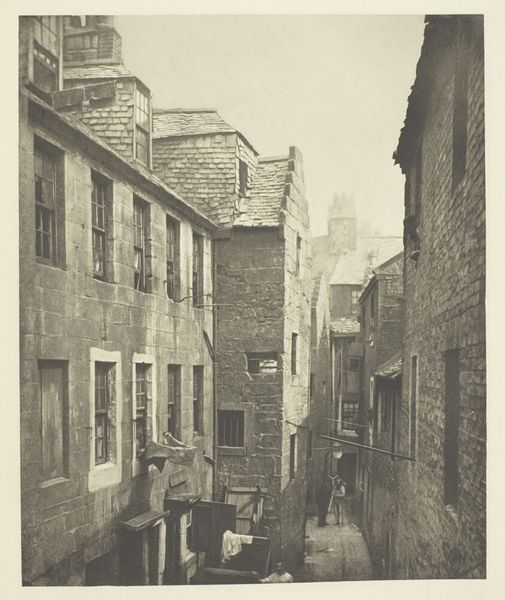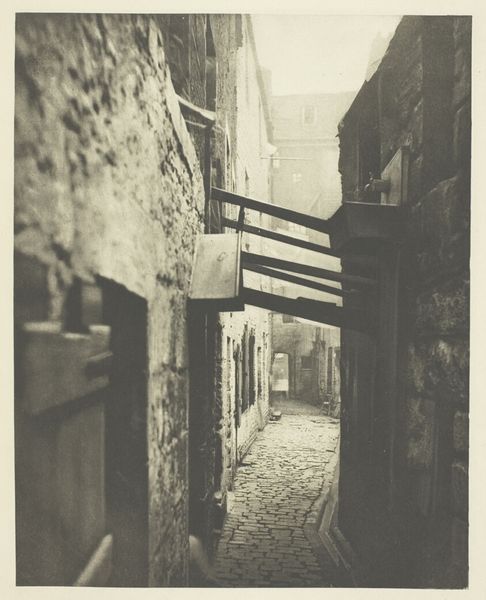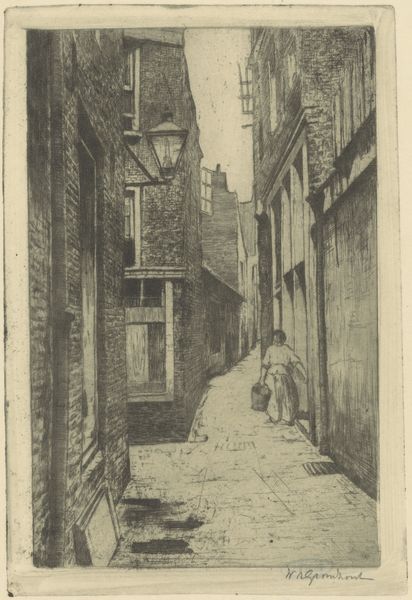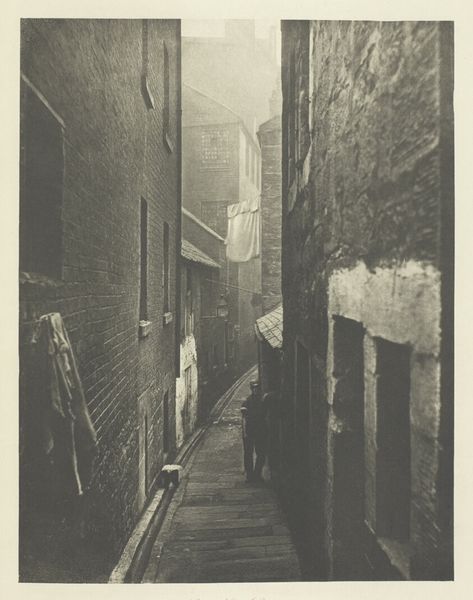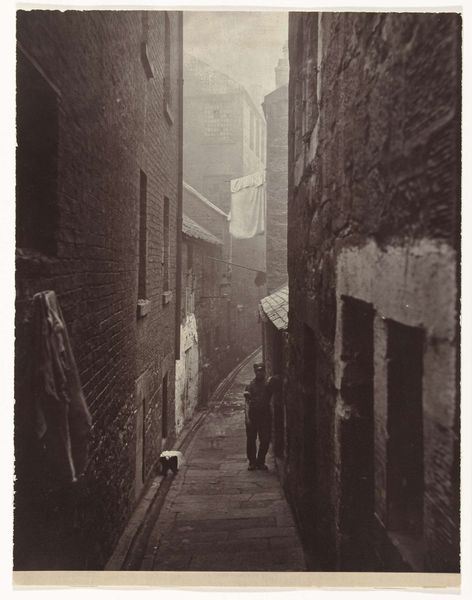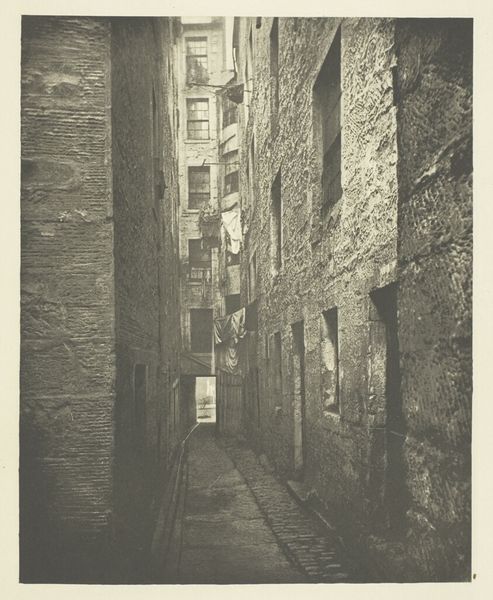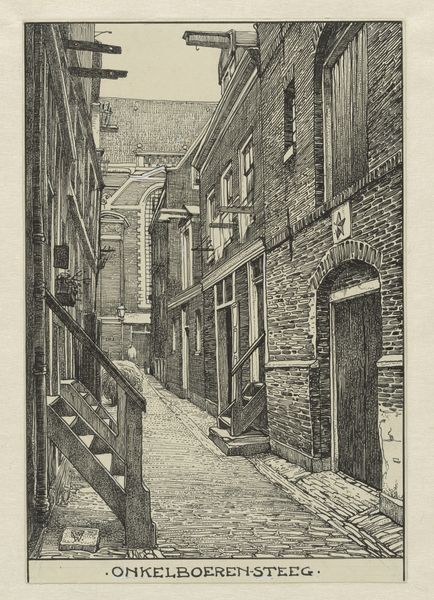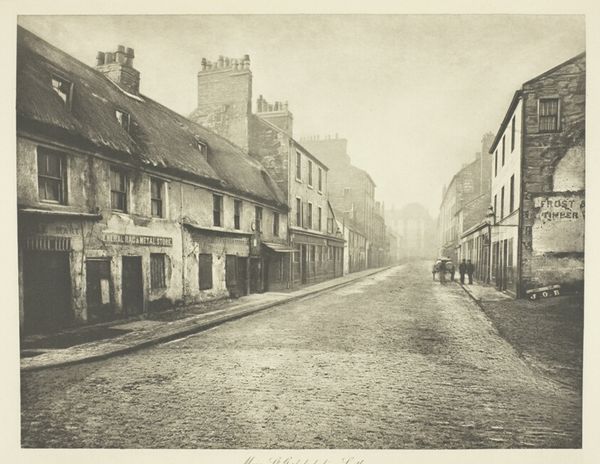
Dimensions: 22.1 × 17.1 cm (image); 37.8 × 27.3 cm (paper)
Copyright: Public Domain
James Craig Annan made this photogravure, "Close No. 11 Bridgegate," capturing a back alley in an unspecified time. Annan’s work can be seen as part of a broader social project: the use of photography at the turn of the century as a tool for social reform. The photogravure process allowed for a high level of detail and tonal range, which Annan uses here to create a sense of atmosphere and depth. The narrow alleyway, framed by tall buildings, creates a sense of confinement. The washing line overhead is a sign of domestic life, but also of poverty and overcrowding. Annan was associated with the Glasgow School of photography, which emerged in the late 19th century in response to rapid industrialization and urbanization. This movement used photography to document the social conditions of the working class, seeking to raise awareness and promote change. To understand Annan's work more fully, we might look to urban planning documents of the period, social surveys, and the writings of social reformers, all of which would help us to contextualize the image within its specific historical and social moment.
Comments
No comments
Be the first to comment and join the conversation on the ultimate creative platform.
